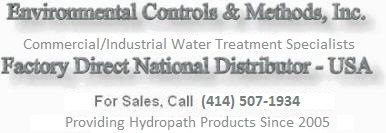


Energy Conservation - The Combined Systems Approach |
|
Often times as an organization looks at ways to conserve energy for a given facility, independent systems are broken into small subgroups and new technologies are "fit" into the picture as applicable. For example, with regard to electrical systems, what often occurs is that a facility manager is given the task to "reduce consumption". The manager is then faced with deciding where to start, and what options make the most sense. The most glaring technologies available typically becomes lighting systems (no pun intended). Plenty of new lighting technologies exist which present themselves as seemingly "easy" retrofits. Once a decision is made to proceed, the facility manager must coordinate fitting hundreds, if not thousands of new light fixtures or elements, over a period of time, which often becomes months or even years. The labor and man-hours in implementing these types of "systems" can be staggering, and most often achieve a very slow payback once completed. When energy consumption is viewed from the broader aspect as a facility system, lighting is typically found to be less than 20% of overall load in most facilities. Yet, the incentive is there to reduce energy consumption "somehow", so the projects are developed using the best methods believed achievable. This is not to say lighting retrofits are not beneficial, but in most cases it can or should be viewed as a very slow way to reduce energy consumption and get a reasonable pay-back. It is a matter of how much "bang you get for the buck", and how quickly you get any bang at all. When organizations begin looking at the real energy-hogs related to fuel consumption, the "bad guys" often becomes the boilers and cooling towers. New trends show that large boiler plants are being replaced with multiple smaller boilers to better size capacity to load or heating demand. It is an easy task to show that boilers operate most efficiently when they run closest to maximum output, which simply means when they run all the time. Modulating burners are being heralded as the solution to further matching capacity to load. Replacing boilers with newer, smaller, and more efficient boilers, or upgrading existing systems to the newer modulating burners, is very costly. Savings returns for modulating boilers over the same units configured as a multi-stage units is typically projected as being well over ten years or more, yet the boiler manufacturers are happily guiding clients to purchase their most expensive wares as a way to help their clients feel "energy conscious". Often times, great lengths are taken to increase building "envelope" efficiency, such as better glazing, insulation, doorways, etc., however it seems that the boiler system itself is most often thought to be operating at it's maximum design efficiency, and not much can be done to improve how it behaves. In most cases, this could not be further from the truth! It seems very odd that very little help is provided to clients when it comes to discussing ways to improve these systems efficiency in simple and cost effective ways.
Now that we have outlined the problems and why they occur, what can your organization do about it?This is where we come in! We look at your heating plant as an overall system. The technologies we are able to put on the table independently deal with each of the problems identified above, but when viewed as a "system", these technologies can, and will, have a tremendous impact on how your plant operates in regard to efficiency as a whole. Ask yourself this question. Would a race team put together a car without matching all the engine components for maximum output? A racecar is a SYSTEM, with careful attention paid to the engine, exhaust, control module and other systems, and ALSO how these systems affect each other as a whole. This is our approach to maximizing the efficiency of a facility system.
When we have completed Step 3 above, your organization will have a system which could well be operating at over 50% greater efficiency than before we started! Sound too good to be true? WE WILL SHOW YOU! Actually, your energy provider does most of the work for us in showing the results, since you will quickly see the difference on your monthly bill! If any other vendors or consultants can offer the solutions to the problems we have outlined above as an integral system or otherwise, we would highly recommend that you use them. The fact is, they don't exist, and this is probably why you still are facing these problems! Contact us today, or better yet, fill out and submit our Feasibility Study Agreement so we can begin to work with your organization to achieve energy efficiency at a level you once thought impossible to obtain. Note: If your organization is currently engaged in constructing an EMS to meet ISO-14001 specifications, or simply struggling to meet up to your current EMS, we can help you meet these goals! Give us a call today! |
Copyright © 2003-2009 ECMI